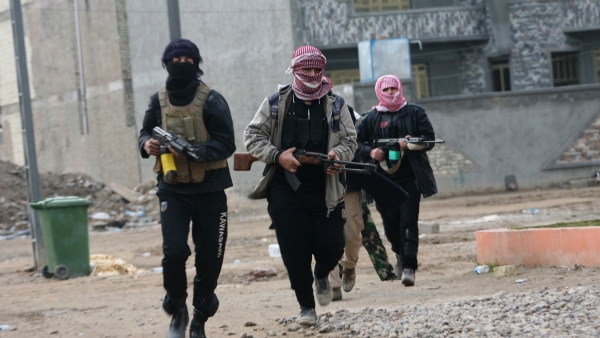Al Qaeda is moulding its regional terror group AQIS for operations into J&K: UN Report
Total Views | 195
According to a United Nations report, the renowned terrorist organization Al-Qaeda is apparently inciting its regional offshoot on the Indian subcontinent named AQIS to expand its activities into Jammu & Kashmir, Bangladesh, and Myanmar.

The 32nd analysis from the UN Security Council's Analytical Support and Sanctions Monitoring Team of the 1267 ISIL (Da'esh) and Al-Qaeda Sanctions Committee, released this week, stated that an unspecified member state assessed Al-Qaeda's efforts to expand its operations via AQIS (Al-Qaeda in the Indian Subcontinent) into nearby regions. According to the same source, several components of AQIS are willing to join or collaborate with the ISIL-K (Islamic State of Iraq and the Levant-Khorasan).
The core Al-Qaeda organization in Afghanistan is steady, with 30 to 60 members; but, when combatants, family members, and sympathizers are included, the organisation has up to 2,000 members in the nation. Al-Qaeda allocates over 200 militants to the Indian Subcontinent under the direction of Osama Mehmood. According to several member nations, Sayf al-Adl in Iran is the most likely candidate to succeed Aiman al-Zawahiri as Al Qaida commander.
Sanaullah Ghafari is regarded as the ISIL-K's most ambitious commander, and while his death was claimed by one member state in June, confirmation is still waiting.
ISIL-K is getting more skilled in its assaults against Taliban and international targets, with the goal of undermining the Taliban's legitimacy and capacity to provide security. ISIL-K's assaults on high-profile Taliban officials in Balkh, Badakhshan, and Baghlan provinces have considerably improved its morale and, as a result, recruiting.
Afghanistan is home to around 20 terrorist organizations, making it a global hotspot for terrorism. The goal of these organizations is to spread their influence across areas and establish quasi-state institutions governed by theocratic authority.
The Taliban and Al-Qaeda have a symbiotic relationship distinguished by closeness. Al-Qaeda operates covertly within Afghanistan to support the false narrative that the Taliban is abiding by agreements not to conduct terrorist attacks on Afghan soil. High-ranking Taliban leaders allow Al-Qaeda militants to enter law enforcement and administrative entities. This infiltration protects Al-Qaeda cells spread across the country.
Al-Qaeda's ability to carry out large-scale assaults is limited, despite the fact that the group's purpose remains strong; the group is presently in a reorganization phase. According to the report, Al-Qaeda is establishing new training centers in Afghanistan's Kunar and Nuristan regions and recruiting new members while discreetly developing its external operations capacity.
The study goes on to explain member nations' worries that the TTP (Tehreek-e-Taliban Pakistan) might become a regional threat if it is allowed to operate freely within Afghanistan. A member state also addressed the possible merger of AQIS and TTP, stressing that AQIS offers direction to TTP for expanding attacks within Pakistan.
Bharati Web







